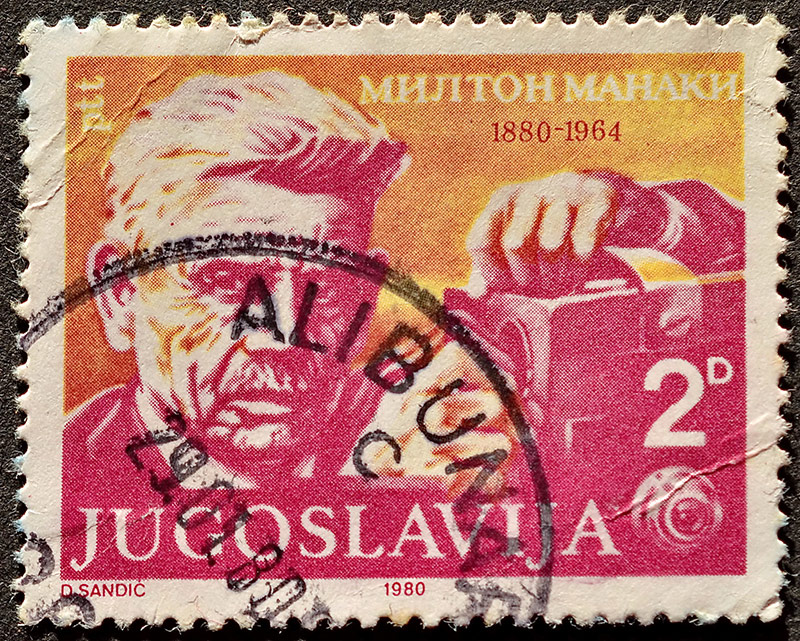The biggest evidence for this are probably the numerous awards that came to this area from some of the world's most prestigious film festivals, such as those in Cannes, Venice or Berlin. However, in addition to lions, bears, palm trees, and other flora and fauna of the festival awards, the most famous statuette in the history of film was still missing - the American Film Academy Award, the Oscar. Sure, this prestigious prize was given to Dušan Vukotić, a member of the "Zagreb School of Animated Film", in 1961, for his "Surogat", but in the "cartoon" category. The main category, one for the best foreign film, miraculously kept slipping away, although as many as six films were among the nominees.
"The Road a Year Long" (1958) was the first Yugoslav movie nominated for an Oscar. It was filmed in the magical atmosphere of Old Town Trogir and spoke of a fictional state whose inhabitants, despite the stepmotherly attitude of the authorities, were trying to build a road that would connect them with the rest of the world. That road might have taken them to the Golden Globes, but not the Oscars.

Then came the sixties, when Winnetou fought his opponents on the Plitvice Lakes. In this decade, four movies were among the nominees. In 1961, "The Ninth Circle", a movie about the Holocaust, the Jasenovac concentration camp and the Nazi occupation of Zagreb, was one of the nominees. Then followed two nominations for the cult Belgrade director, Aleksandar Saša Petrović - in 1965 for the war film "Three" and 1967 for "I Even Met Happy Gypsies". The failure of Yugoslav films in their battle for the Oscar was then complemented by Veljko Bulajić and his "Battle of the Neretva". Even the fact that Pablo Picasso himself drew the poster for this movie, and the fact that Jablanica iron bridge was mined by Yul Brynner personally didn't help it get it. Similarly, Orson Welles fighting against the partisans and Omar Sharif and Sophia Loren sitting next to Tito at the premiere of the movie didn't help either. Did we even mention the fact that the great Bernard Herrmann composed the music for the movie with the help of the London Philharmonic Orchestra? This is the movie in which Bata Živojinović showed everyone Tito's famous "Prozor must fall" order. Prozor did indeed fall, but the Oscar did not.

In the following 15 years, Yugoslav cinematography has been waiting for a new nomination, even though real film classics had paraded through the movie screens. "The Master and Margarita", "Sutjeska" - in which Richard Burton played Josip Broz Tito, "Occupation in 26 Pictures", "Special Treatment", "Walter Defends Sarajevo", "Who’s Singin’ Over There", " Marathon Runners Do a Lap of Honour"... The old, dilapidated house in the center of Belgrade where this last of the listed films was shot, still preserves the memory of the golden years of Yugoslav cinematography.
"The number and the scale of how preserved the locations where Yugoslav cult films were shot is imposing. Still, not many tourists visit them. The popularity of the locations is definitely influenced by some recently done well-known films or shows, as is the case with Game of Thrones and Dubrovnik. However, Zagreb, Sarajevo, and Belgrade, as the birthplaces of very talented filmmakers, still preserve numerous places that inspired screenwriters, directors, and actors both back then, but also today. Some of these locations are better known by the general public, like the famous view from Sarajevo next to the "Sehen Sie diese Stadt", but many are hidden or known only to local lovers and custodians of film heritage in this area." said Anita Barjaktaravic, Travel Manager and Coordinator at Red Africa Travel, for sarajevo.travel.

The journey along the following 50 years introduces us to the fact not even Emir Kusturica's debut "Do You Remember Dolly Bell" was awared an Oscar. This cult movie, however, announced a completely new era of Yugoslavian film - his. That era and its style were indeed an oasis when perceived from the perspective of the frequent war themes that most Yugoslav filmmakers dealt with. This was surely recognized by the American Film Academy, as his next movie, "When Father Was Away on Business", got a... nomination. "Just" a nomination. But this didn't prevent Kusturica from making many more cult movies and gathering literally all of the world's film awards. He probably still keeps them in his film settlement, a real oasis dedicated to filmmaking, "Kustendorf," located on the border of Serbia and Bosnia, very literally showing his "borderline" identity.
The eighties passed, and then the nineties and the war was over. There were no new nominations on the horizon.
And then... when no one hoped for it, on the threshold of the new millennium, John Travolta and Sharon Stone said the name that almost no one in BiH or other countries of the former Yugoslavia had heard of: Danis Tanović! People watched with disbelief and admiration as the striking Bosnian took the golden statuette while expressing his feelings in the cult sentence: "This is for my country, for Bosnia, thank you."
The Yugoslav race for the Oscar began with a film with the symbolic title "The Road A Year Long," and ended a few decades later with a movie with an even more symbolic title - "No Man's Land." During its turbulent history, the country through which many conquerors passed, from the Turks to the Austro-Hungarians, was "everyone's." To win an Oscar, it seems like it needed to become "nobody's." Fun fact, the film "No Man's Land" was not shot on the territory of BiH, at all. However, as Red Africa Travel representatives assert, there are many locations hiding Oscar-class stories.

